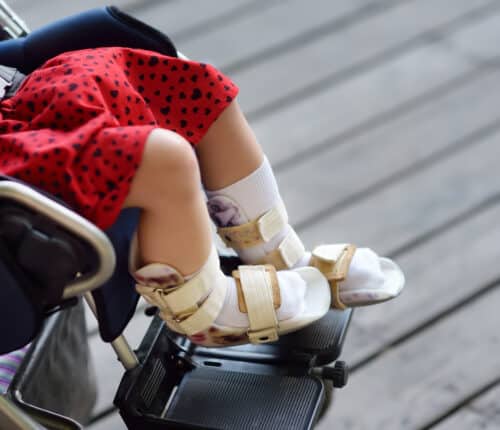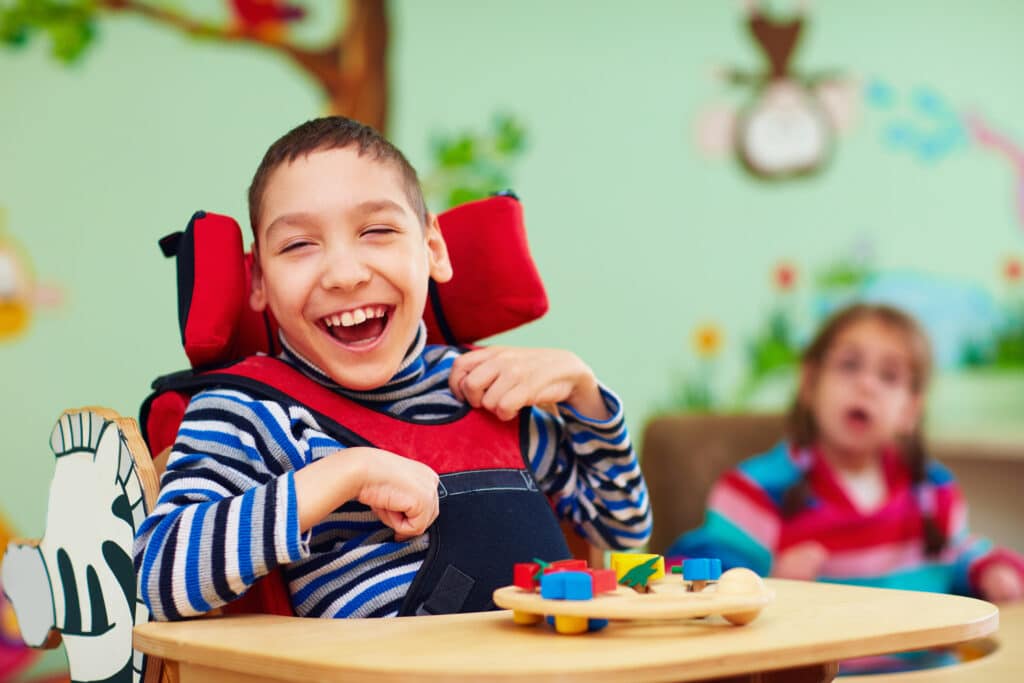
Understanding Cerebral Palsy
Cerebral palsy (CP) can have a significant impact on a person’s physical and cognitive abilities, as well as their quality of life.
This blog provides an overview of cerebral palsy, its long-term effects, things you can do to help reduce the risk of this and other developmental problems, and the legal options following cerebral palsy caused by medical negligence.
CP is a neurological disorder that affects movement, muscle tone, and coordination. It is caused by damage to the developing brain and can occur during pregnancy, childbirth, or in the first few years of life.
According to the CDC’s Autism and Developmental Disabilities Monitoring Network, cerebral palsy is the most common motor disorder among children in the U.S. with about 10,000 babies born with it every year.
In other words, for every 1,000 babies born in the United States, approximately three will be diagnosed with some type of cerebral palsy by the time they are 8 years old.

Is Cerebral Palsy Preventable?
Unfortunately, there is currently no known way to completely prevent congenital or acquired cerebral palsy. However, cerebral palsy which is the result of birth injuries and medical malpractice is preventable.
Birth injuries that may lead to cerebral palsy include:
- Failure to order a C-section in a timely manner
- Failure to detect and correct umbilical cord problems
- Birth trauma due to forceful delivery
- Failure to detect and treat infections in the mother or infant
- Failure to monitor fetal heartbeat and oxygen levels
- Delivery injuries caused by the misuse of medical instruments (Obstetrical forceps, among others)
- Vacuum extraction injuries
Additionally, although cerebral palsy related to genetics is not preventable, there are some things that parents and doctors can do before, during, and after pregnancy to help reduce the risk of this and other developmental problems.
Factors That May Help Reduce The Risk of Cerebral Palsy and Other Developmental Problems

- Before pregnancy:
- Maintain a healthy lifestyle. This includes making sure that any infections the mother may have, are treated and that any other health conditions are in control, ideally before pregnancy.
- Get vaccinated for certain diseases that could harm a developing baby. This includes, for example, chickenpox and rubella.
- Consider options to reduce the chance of a multiple pregnancy (twins, triplets, etc) if any fertility treatments are used to get pregnant. This can be done by, for example, transferring only one embryo at a time.
- During pregnancy:
- Attend all prenatal appointments accordingly and learn more about how to have a healthy pregnancy.
- Reduce the risk of infections that might harm your developing baby by, for example, washing your hands often with soap and water, and avoiding contact with people with contagious infections.
- Contact your healthcare provider if you get sick or have other signs of infection during pregnancy.
- Get Rh compatibility testing done. If there is a difference in the blood type or Rh incompatibility between mother and baby it can cause jaundice (when the skin or the whites of the eyes turn yellow) and lead to kernicterus (a type of brain damage) which doctors can prevent by treating the mother with Rh immune globulin when she is 28 weeks pregnant and again shortly after giving birth.
- Talk to your doctor about more ways to prevent problems if you are at risk for preterm delivery.
- After delivery:
- Learn how to help keep your baby healthy and safe after birth.
- Your baby should be checked for jaundice in the hospital and again within 48 hours after leaving the hospital as severe jaundice that is not treated can cause brain damage (kernicterus).
- Vaccinate your child against infections that may cause meningitis and encephalitis. This includes the HiB vaccine and the pneumococcal vaccine.
- Prevent possible head injuries. This can be done by using an appropriate car seat, child-proofing your home, and carefully watching your infant.
These measures may not guarantee that your child will not develop cerebral palsy. Still, they may help reduce the chances of complications and act as an initial measure to help you ensure a healthier pregnancy and delivery.
The Long-Term Effects of Cerebral Palsy
Cerebral palsy can have significant long-term effects on a person’s physical and cognitive abilities, as well as their quality of life. The long-term effects of cerebral palsy vary depending on the severity of the condition and the area of the brain that is affected.
The long-term effects of cerebral palsy may include:
- Physical effects: Muscle stiffness, muscle weakness, and difficulty with coordination and balance. These physical effects can make it difficult to perform daily tasks, such as walking, eating, and dressing. In severe cases, a person with cerebral palsy may require a wheelchair or other mobility aids.
- Cognitive effects: Difficulty with speech, language, and communication. In some cases, a person with cerebral palsy may have intellectual disabilities or learning difficulties.
- Emotional effects: Depression and anxiety that may be caused by the challenges of living with a physical or cognitive disability.
Living with cerebral palsy can be incredibly challenging, as the physical, cognitive, and emotional effects of the condition can significantly impact a person’s quality of life and ability to perform daily tasks.
Therefore, birth injuries caused by a healthcare provider’s negligence are unacceptable.
Learn More About Your Options
Living with cerebral palsy requires adapting, careful planning, and patience. Although it is a difficult disorder, there are available therapies and treatments that can aid in overcoming some of the challenges and promote a healthier and fuller life.
If your child’s cerebral palsy was caused by medical negligence or malpractice, you may be entitled to compensation, such as:
- Medical expenses related to the treatment of CP
- Costs of ongoing care and therapy for the child
- Pain and suffering experienced by the child and family members
However, pursuing legal action against the responsible parties, such as the hospital or healthcare providers, can be a hard and emotionally draining process. For this reason, families may benefit from the guidance and support of an experienced medical malpractice attorney who can help them get the compensation they are entitled to.
At Birth Injury Guide we are here to help and offer FREE legal consultations. If you want to learn more about compensation that may be available to you, take the first step and complete this form on this page or call 877-415-6603 now.


